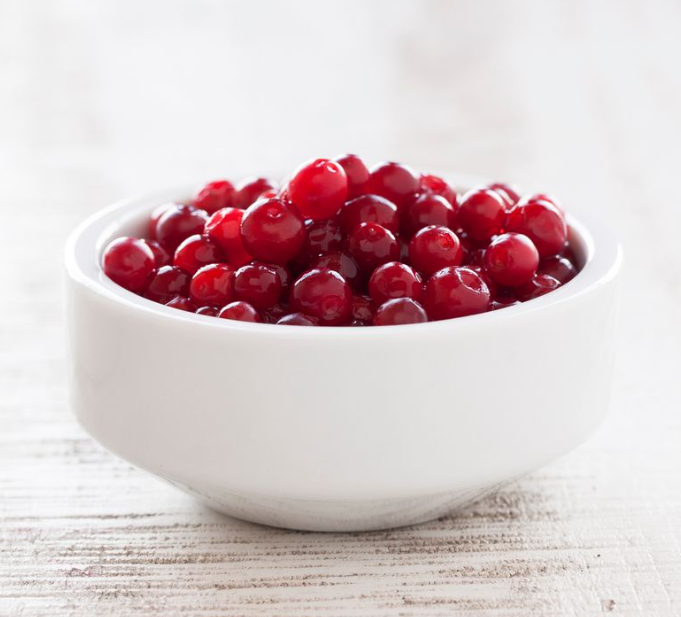Organic Cranberries of Washington
The cranberry is a classic holiday accompaniment with its tart tangy flavor all in a bite-size red package. Packed into this lovely berry are lots of helpful antioxidants and beneficial nutrients, too. The varied uses, relative ease with which it can be preserved and appealing flavor profile of the cranberry make it a popular edible well beyond the holiday season.
Organic Cranberries are a hearty evergreen perennial that grows low to the ground as a vine. Its horizontal stems produce runners that can be up to 6-feet in length but have very shallow roots systems of only 4-inches deep. The vines are dormant in the winter and grow from early April through November with the lifespan of a single vine being upwards of 150 years. Springtime is when the weed population is controlled and the plants' required pollination by honeybees or bumblebees occur. Cranberries are grown in bogs and the bogs can either be natural formations or man-made. A bog is formed in a wetland and characterized by distinct layers of moss, acidic water and peat. The growing “bed” is dug into this bog and the cranberries are planted, grown and harvested within this bed.
Vibrant red organic cranberries floating on a shallow sea of water within the bog is a classic image for most consumers. Organic Cranberries can be harvested in two ways – dry harvesting or wet harvesting.
Wet harvesting is what we are used to seeing in magazines and on television commercials. The bogs are flooded with 18-inches of water the night before harvesting. The next day “egg beater” reels comb through the bog and bring the hollow berries to the top. They are buoyed to the side of the bed and vacuumed off the water into a waiting vehicle. Wet harvesting is easy and less labor intensive than dry harvesting, but the egg beater reels damage fruit and most of them are turned into drinks, sauces or used as ingredients in other foods. Wet harvested cranberries also cannot be legally sold as whole berries because they are considered a “flooded crop”.
Dry harvesting involves growers walking with mechanical rakes through the dry cranberry bed and combing the vines of ripe fruit. A vacuum is used to suck up the lightweight berries and move them to a waiting vehicle. Dry harvested Organic Cranberries can be sold as whole berries and are the fresh variety you will find in stores.
Most cranberries are grown in Wisconsin, but Washington harvests and grows a large number on the coast as well. The majority of these cranberries are grown in Grayland, and Oceanside City in Grays Harbor County. The Grayland ditch where flooded cranberry bog runoff ends up flows north into Grays Harbor and south into Willapa Bay. The following production data of Washington cranberry crops is from the United States Department of Agriculture and is the data from 2000.
**Washington ranks fifth in the U.S. in the production of cranberries
**Currently Washington only has only one Organic Cranberry farm
**Washington produces 3 percent of the total U.S. Crop and 15 to 20
percent of the fresh fruit market
**8,400 tons of cranberries valued in excess of $5.4 million were produced during the 1998 crop year on 1600 acres
**Production costs (1995) averaged $3,000/acre, while establishment costs averaged $40,000/acre. At the current price of cranberries (<$25/bbl

